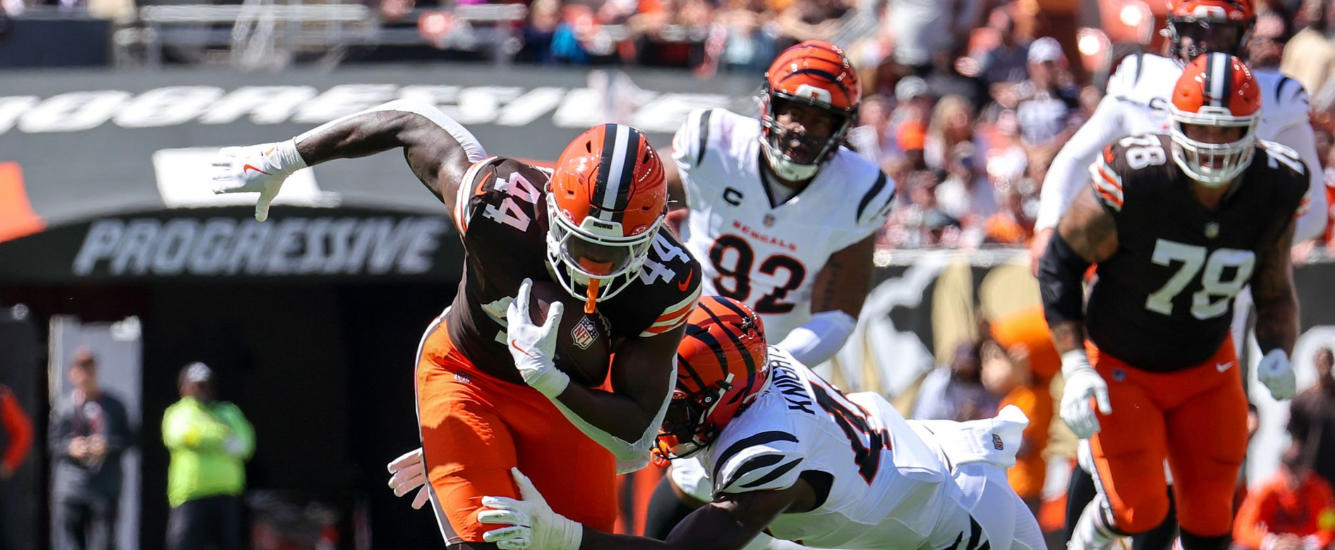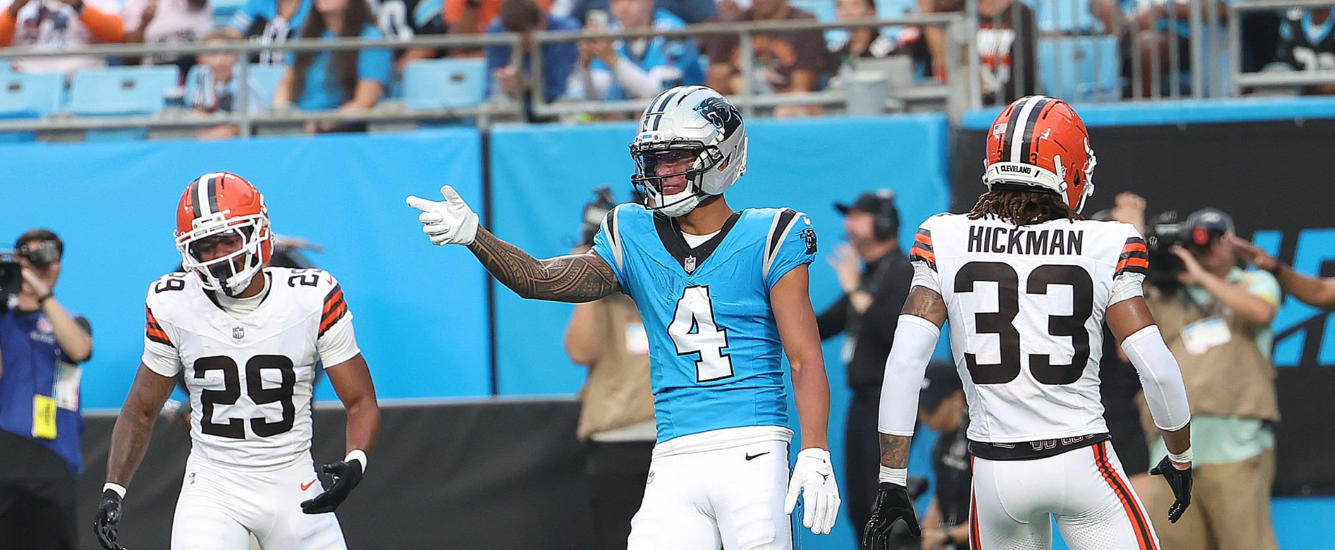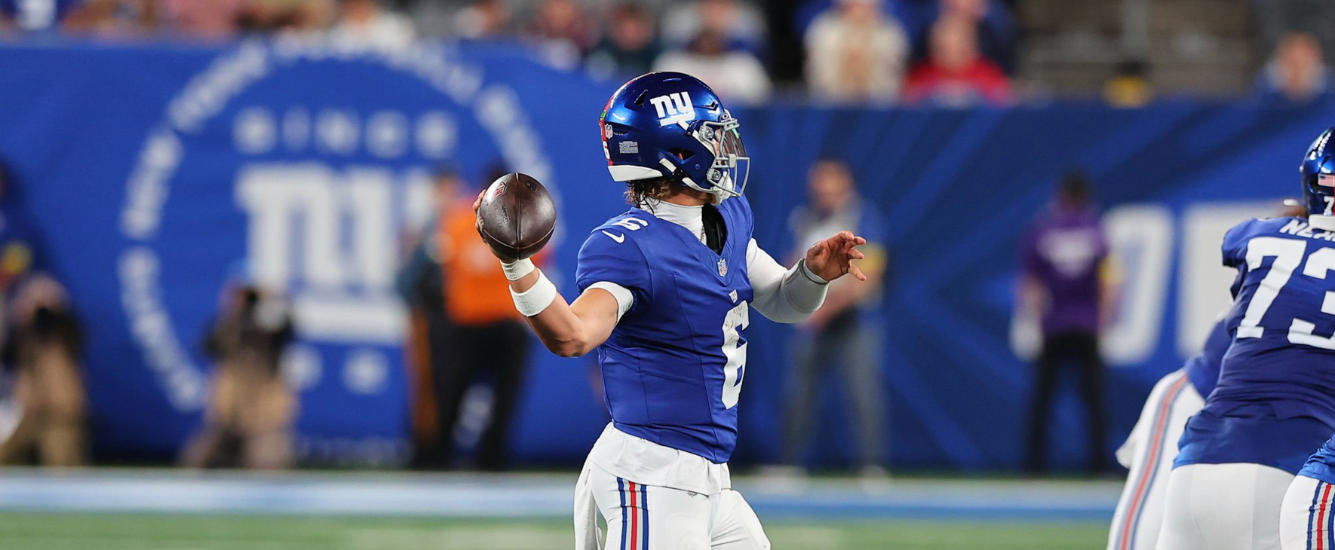Scott Fish Bowl online drafts start today. The kickoff of the annual charity tournament — now in its 14th season — has for years marked the unofficial start of draft season. Yes, many of us have been drafting best ball teams all offseason. We degenerates marked the start of “draft season” a long time ago. Still, few events can energize you for the return of NFL football at the height of summer the way SFB does. In 2024, thousands of teams will compete for charity across dozens of live events, online drafts, satellite leagues, and eliminator leagues. Proceeds as always benefit FantasyCares.
How to Prepare for SFB14 Drafts
One difficulty facing drafters wondering how to approach an SFB-style league is finding accurate ADP. SFB14, as in all other years, is a Superflex, tight-end-premium format with some additional wrinkles that ultimately revive running back value and devalue wide receivers. In many ways these dynamics shift in parallel when looking at the differences between FFPC Superflex leagues and Best Ball Mania 5 drafts, or even between FFPC Superflex and FFPC 1-QB leagues. The FFPC is a TE-premium format, and Superflex drafts add significant value to the QB position. However, the Superflex slot replaces one of the traditional flex slots from the 1-QB format, which has a substantial devaluing effect on the WRs. Thus we end up in a similar situation: QBs and TEs are boosted; WRs are nerfed. (RBs in turn benefit from the relative devaluing of WRs.) Therefore, what works in FFPC Superflex drafts should theoretically work in SFB14 drafts.
How to Approach FFPC Superflex Drafts
Shawn Siegele has previously explored the best approaches to the quarterback position in FFPC Superflex leagues. While the exact construction depends on draft slot, the overarching takeaway is that it’s nearly always a mistake to be overexposed to early QBs. QB-heavy roster constructions in Superflex drafts parallel their RB-heavy counterparts in 1-QB drafts. Just as with early RBs, chasing the difference-makers at the position has a tendency to backfire. From most draft slots, you can improve your expected win rate by waiting on QB, even to the point that it starts to get uncomfortable.
Zero-QB Is Dominant, Yet Few Drafters Do It
Shawn noted that a Zero-QB approach (QB1 after Round 5) has dominated over the last three seasons, and my own research suggests you might be able to wait even a little bit longer.

Drafters enjoy 10%-plus win rates even if they wait until Round 8 to draft their first QB. Of course, the sample size in Round 8 and beyond is exceedingly small. This is evident in the disconnect between win rate and average points. Yet the unpopularity of these builds is part of what gives Zero-QB constructions such an advantage in Superflex leagues. Very few drafters are following this blueprint.

What Position Should You Prioritize Instead?
But if you’re not taking QBs with your earliest picks, what position should you be attacking? The Best Ball Win Rate Explorer shows a strong preference for first-round RBs, if you don’t have a top-four pick.

This fits perfectly with what Shawn found about the difference between a stars-and-scrubs QB build and a Zero-QB build: If you can get a top-four QB, you should; if not, don’t chase those points. Instead you should probably use your early picks — at least your first pick — on an RB. But RB isn’t the only way to play the early rounds.
Is Early Wide Receiver Still Viable?
Despite being devalued through the removal of a flex position, the WR position still matters. Depending on your draft slot, you can draft a WR with all your early picks, though first-round WR picks have lagged behind first-round RBs.

WR is a strong option in Round 2 and early Round 3. It’s perhaps no surprise that the teams at turns are much stronger than middle draft positions. Teams in the first few selections of Round 1 can pair an elite QB with one (or two) of the top WR options. Teams at the tail end of Round 1 miss on the elite QBs and the elite RBs, but can instead pair two elite WRs before addressing other positions.
Can Double-Elite TE Work in This Format?
Against this backdrop, early TEs are more hit and miss.

In part, this is because there have been few worthwhile options available early in drafts. We’re talking about only a few TEs each year who have been drafted in the first five rounds.

As you can see, while in some cases these early TE picks were absolutely critical to success – Mark Andrews appeared on 11 of the 12 teams to make the finals in the 2021 FFPC Best Ball Tournament – in a lot of cases they did not pay off.
On the other hand, 2024’s ADP landscape for TEs is unprecedented. Whereas in past seasons, there were an average of 4.5 TEs available in the first five rounds, in 2024 there are seven, but none of them are going as early as Travis Kelce did in any of the last three seasons. Rounds 6 and 7 give us three or four additional TEs we might classify as elite options.

Of course, stipulating that we get two TEs before Round 8 doesn’t add much to our Zero-QB builds.

Specifying this build even further would only make the sample size smaller and make the numbers less reliable, so it’s not worth pursuing more niche lines, even though the prices are much more palatable this year. Elite TEs become much more attractive at reduced prices compared to past seasons, yet they are also likely to be more expensive in SFB14, which awards an even larger premium to TE scoring. Nevertheless, I’m keeping the elite TEs on my radar for all my early picks.
Translating These Numbers to the Scott Fish Bowl
There’s an additional key difference between FFPC Superflex drafts and SFB14 that could have a profound impact on these numbers: third-round reversal. Whereas in most FFPC Superflex leagues, drafters at the back half of the first round don’t have access to the top three TEs in the draft, third-round reversal changes things. FFPC Superflex ADP, if followed exactly, would have Sam LaPorta and Kyle Pitts falling to Team 12 instead of Team 1, offering teams in the back end of Round 1 an excellent opportunity to pair double-elite TE with Zero-QB.
And even if TEs end up going much earlier in SFB14 (which is very possible), recall how powerful early Round 3 was for WR picks.

Those early Round 3 picks are now going to the teams at the end of the draft, not the beginning. Teams 11 and 12 have an opportunity to make three consecutive WR picks with hugely positive win rate expectations with their first three selections.
Zero-QB is a winning strategy in FFPC Superflex leagues. It becomes supercharged in SFB14 and other formats that include third-round reversal, if you have a pick near the Round 1/2 turn. Given the prices of the elite TEs, I don’t want to eschew them entirely. Yet given the power of WR picks at the back end of drafts, it’s tempting to lock up three (or more) elite options with your early picks.
Putting These Draft Plans into Action (in Theory)
If we assume tight ends go slightly earlier in SFB14 than in FFPC Superflex leagues, drafters at the 11 and 12 slot might not have access to LaPorta and Kelce in the third. But it’s still possible to build a superteam from these positions. For example, here are a couple builds that might be possible from the 1.12.
| Pick | Player |
|---|---|
| 1.12 | Ja’Marr Chase |
| 2.01 | Justin Jefferson |
| 3.01 | Marvin Harrison |
| 4.12 | Kyle Pitts |
| 5.01 | George Kittle |
| 6.12 | Geno Smith |
| 7.01 | Zay Flowers |
| 8.12 | Daniel Jones |
| Pick | Player |
|---|---|
| 1.12 | Tyreek Hill |
| 2.01 | Amon-Ra St. Brown |
| 3.01 | Puka Nacua |
| 4.12 | Jaylen Waddle |
| 5.01 | Evan Engram |
| 6.12 | Geno Smith |
| 7.01 | Brock Bowers |
| 8.12 | Daniel Jones |
Naturally, these builds are both Zero-QB and Zero-RB builds. The good news is that all of our favorite Zero-RB targets are still available in Round 9 and beyond, as are multiple stacking options for these two QBs. But we’re getting WRs in the third round who are first-round picks in many other formats. A late pick can be a cheat code in format similar to SFB14, if you play it right.


















